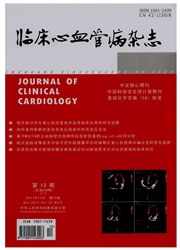

 中文摘要:
中文摘要:
心房颤动(房颤)是临床上最常见的心律失常,房颤及其并发症是导致心血管疾病发病和死亡的重要因素。虽然近年来的研究对于房颤的发生、维持和进展的病理生理机制有了很多新认识,但仍有许多尚未弄清。目前认为房颤的病理生理机制主要包括电重构、结构重构、自主神经系统功能改变和Ca2+调控异常4个方面,由此也提出了一些学说。本述评将对这方面的当前认识作扼要介绍。
 英文摘要:
英文摘要:
Atrial fibrillation(AF)is the most common sustained arrhythmia in clinical practice.AF and its complications are responsible for the population morbidity and mortality in cardiovascular disease.Recent research has identified a multitude of pathophysiological mechanisms related to the initiation,maintenance,and progression of AF.However,many aspects of AF pathophysiology remain incompletely understood.Presently,it is agreed that there are 4principal pathophysiological mechanisms contributing to AF,including electrical remodeling,structural remodeling,autonomic nervous system changes,and Ca2+handling abnormalities.Some hypotheses of AF have been put forward based on these mechanisms.This report reviews recent advances in the understanding of basic pathophysiology of AF.
 同期刊论文项目
同期刊论文项目
 同项目期刊论文
同项目期刊论文
 18 beta-Glycyrrhetinic acid potently inhibits Kv1.3 potassium channels and T cell activation in huma
18 beta-Glycyrrhetinic acid potently inhibits Kv1.3 potassium channels and T cell activation in huma Potent Suppression of Kv1.3 Potassium Channel and IL-2 Secretion by Diphenyl Phosphine Oxide-1 in Hu
Potent Suppression of Kv1.3 Potassium Channel and IL-2 Secretion by Diphenyl Phosphine Oxide-1 in Hu Interleukin-17A contributes to the development of post-operative atrial fibrillation by regulating i
Interleukin-17A contributes to the development of post-operative atrial fibrillation by regulating i Lovastatin blocks Kv1.3 channel in human T cells: a new mechanism to explain its immunomodulatory pr
Lovastatin blocks Kv1.3 channel in human T cells: a new mechanism to explain its immunomodulatory pr 期刊信息
期刊信息
